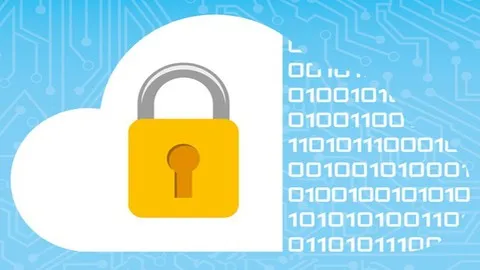
Learn How to Test Your Website's Security (From Scratch) 
Learn how to test your website's security from scratch with this comprehensive course! Install hacking lab and needed software, discover and exploit dangerous vulnerabilities, bypass security measurements, intercept requests, hack all websites on same server, bypass filters and client-side security, and more. Gain the skills to protect yourself from malicious attacks and become a security expert. ▼
ADVERTISEMENT
Course Feature
![]() Cost:
Cost:
Paid
![]() Provider:
Provider:
Udemy
![]() Certificate:
Certificate:
No Information
![]() Language:
Language:
English
![]() Start Date:
Start Date:
Self Paced
Course Overview
❗The content presented here is sourced directly from Udemy platform. For comprehensive course details, including enrollment information, simply click on the 'Go to class' link on our website.
Updated in [June 30th, 2023]
This course provides an overview of how to test the security of a website from scratch. Students will learn how to install a hacking lab and the necessary software, which works on Windows, OS X and Linux. They will discover, exploit and mitigate a number of dangerous vulnerabilities, use advanced techniques to discover and exploit these vulnerabilities, bypass security measurements and escalate privileges, intercept requests using a proxy, hack all websites on the same server, bypass filters and client-side security, adopt SQL queries to discover and exploit SQL injections in secure pages, gain full control over the target server using SQL injections, discover and exploit blind SQL injections, install Kali Linux - a penetration testing operating system, install Windows and vulnerable operating systems as virtual machines for testing, learn Linux commands and how to interact with the terminal, learn Linux basics, understand how websites and web applications work, understand how browsers communicate with websites, gather sensitive information about websites, discover servers, technologies and services used on target website, discover emails and sensitive data associated with a specific website, find all subdomains associated with a website, discover unpublished directories and files associated with a target website, find all websites hosted on the same server as the target website, discover, exploit and fix file upload vulnerabilities, exploit advanced file upload vulnerabilities and gain full control over the target website, discover, exploit and fix code execution vulnerabilities, exploit advanced code execution vulnerabilities and gain full control over the target website, discover, exploit and fix local file inclusion vulnerabilities, exploit advanced local file inclusion vulnerabilities and gain full control over the target website, exploit advanced remote file inclusion vulnerabilities and gain full control over the target website, discover, fix, and exploit SQL injection vulnerabilities, bypass login forms and login as admin using SQL injections, writing SQL queries to find databases, tables and sensitive data such as usernames and passwords using SQL injections, bypass filtering and login as admin without password using SQL injections, bypass filtering and security measurements, read/write files to the server using SQL injections, patch SQL injections quickly, learn the right way to write SQL queries to prevent SQL injections, discover basic and advanced reflected XSS vulnerabilities, discover basic and advanced stored XSS vulnerabilities, discover DOM-based XSS vulnerabilities, how to use BeEF framework, hook victims to BeEF using reflected, stored and DOM based XSS vulnerabilities, steal credentials from hooked victims, run JavaScript code on hooked victims, create an undetectable backdoor, hack into hooked computers and gain full control over them, fix XSS vulnerabilities and protect yourself from them as a user, what do we mean by brute force and wordlist attacks, create a wordlist or a dictionary, launch a wordlist attack and guess admin's password, discover all of the above vulnerabilities automatically using a web proxy, run system commands on the target webserver, access the file system (navigate between directories, read/write files), download, upload files, bypass security measurements, access all websites on the same webserver, and connect to the database and execute SQL queries or download the whole database to the local machine.
[Applications]
Those who have completed the course Learn How to Test Your Website's Security (From Scratch) can apply their knowledge to test the security of their own websites. They can use the techniques they have learned to discover, exploit and mitigate a number of dangerous vulnerabilities. They can also use advanced techniques to bypass security measurements and escalate privileges. Additionally, they can use a proxy to intercept requests, hack all websites on the same server, bypass filters and client-side security, and adopt SQL queries to discover and exploit SQL injections in secure pages. Furthermore, they can gain full control over target servers using SQL injections, discover and exploit blind SQL injections, install Kali Linux, install Windows and vulnerable operating systems as virtual machines for testing, learn Linux commands and how to interact with the terminal, understand how websites and web applications work, gather sensitive information about websites, discover servers, technologies and services used on target websites, discover emails and sensitive data associated with a specific website, find all subdomains associated with a website, discover unpublished directories and files associated with a target website, find all websites hosted on the same server as the target website, discover, exploit and fix file upload vulnerabilities, exploit advanced file upload vulnerabilities and gain full control over the target website, discover, exploit and fix code execution vulnerabilities, exploit advanced code execution vulnerabilities and gain full control over the target website, discover, exploit and fix local file inclusion vulnerabilities, exploit advanced local file inclusion vulnerabilities and gain full control over the target website, exploit advanced remote file inclusion vulnerabilities and gain full control over the target website, discover, fix and exploit SQL injection vulnerabilities, bypass login forms and login as admin using SQL injections, writing SQL queries to find databases, tables and sensitive data such as usernames and passwords using SQL injections, bypass filtering and security measurements, read/write files to the server using SQL injections, patch SQL injections quickly, learn the right way to write SQL queries to prevent SQL injections, discover basic and advanced reflected XSS vulnerabilities, discover basic and advanced stored XSS vulnerabilities, discover DOM-based XSS vulnerabilities, how to use BeEF framework, hook victims to BeEF using reflected, stored and DOM based XSS vulnerabilities, steal credentials from hooked victims, run javascript code on hooked victims, create an undetectable backdoor, hack into hooked computers and gain full control over them, fix XSS vulnerabilities and protect themselves from them as a user, what do we mean by brute force and wordlist attacks, create a wordlist or a dictionary, launch a wordlist attack and guess admin's password, and discover all of the above vulnerabilities automatically using a web proxy.
[Career Path]
One job position path that is recommended for learners of this course is a Web Security Tester. Web Security Testers are responsible for testing the security of websites and web applications to identify and mitigate any potential vulnerabilities. They use a variety of tools and techniques to scan websites and web applications for security flaws, such as SQL injections, XSS vulnerabilities, and brute force attacks. They also use advanced techniques to bypass security measures and escalate privileges. Web Security Testers must have a strong understanding of web technologies, such as HTML, CSS, JavaScript, and SQL, as well as a good understanding of network protocols and security measures.
The demand for Web Security Testers is expected to grow in the coming years as more businesses move their operations online and become increasingly reliant on web technologies. Companies are becoming more aware of the need to protect their websites and web applications from malicious attacks, and are investing more resources into hiring qualified Web Security Testers to ensure their websites and web applications are secure. As a result, Web Security Testers are expected to be in high demand in the near future.
[Education Path]
The recommended educational path for learners interested in learning how to test website security from scratch is to pursue a degree in Computer Science or Cyber Security. This degree will provide learners with the necessary knowledge and skills to understand the fundamentals of computer science, cyber security, and website security. It will also provide learners with the opportunity to gain hands-on experience in the field of website security testing.
The degree program will typically include courses in computer programming, computer networks, operating systems, database management, cryptography, and website security. It will also include courses in ethical hacking, penetration testing, and web application security. In addition, the degree program will provide learners with the opportunity to gain hands-on experience in the field of website security testing through internships and other practical experiences.
The development trend of this degree program is to focus on the latest technologies and techniques in the field of website security testing. This includes the use of automated tools and techniques to detect and mitigate website security vulnerabilities. Additionally, the degree program will focus on the development of secure coding practices and the implementation of secure coding standards. Finally, the degree program will also focus on the development of secure web applications and the implementation of secure web application architectures.
Course Provider

Provider Udemy's Stats at AZClass
Discussion and Reviews
0.0 (Based on 0 reviews)
Explore Similar Online Courses

Design Over & Under Voltage Protection Circuit

Practice Getters and Setters in JavaScript Course

Python for Informatics: Exploring Information

Social Network Analysis

Introduction to Systematic Review and Meta-Analysis

The Analytics Edge

DCO042 - Python For Informatics

Causal Diagrams: Draw Your Assumptions Before Your Conclusions

Whole genome sequencing of bacterial genomes - tools and applications

Ryan Montgomery - #1 Ethical Hacker Who Hunts Child Predators Catches One Live On Podcast SRS #56

Become Master in Ethical Hacking with Android (without Root)


Start your review of Learn How to Test Your Website's Security (From Scratch)